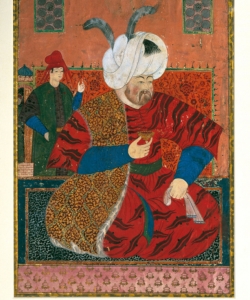Toronto to house only Islamic art museum in North America - 2010-05-26
The artistic pieces have graced the homes of Mughal emperors, adorned the gardens of Persian palaces and educated the masses of the Muslim world.
Soon, over 1,000 years of Islamic art and culture will find a permanent home in Toronto.
The groundbreaking for the Aga Khan Museum, the first in North America solely devoted to Islamic art, will take place on Friday near Don Mills Rd. and Eglinton Ave. E. The museum will be built alongside an Ismaili centre and park on a 7-hectare site at 49 Wynford Dr.
More than 1,000 Islamic artifacts from China to the Iberian Peninsula will be showcased — with 200 on permanent display — when the museum opens in 2013.
The pieces, which come from the collection of the Aga Khan family, already have more air miles than most Canadians. They have been featured in museums around the world from London to Madrid. Before they settle in Toronto, they will be exhibited in Istanbul and five other cities in the Muslim world.
The Aga Khan, spiritual leader of the Shia Ismaili Muslims, will arrive Friday to put a shovel in the ground and give his blessings to the $300 million project
“While some North American museums have significant collections of Muslim art, there is no institution devoted to Islamic art,” he said. “In building the museum in Toronto, we intend to introduce a new actor to the North American art scene. Its fundamental aim will be an educational one, to actively promote knowledge of Islamic arts and culture.”
The 10,000-square-foot building will be designed by Japanese architect Fumihiko Maki, who is also working on the expansion of the United Nations building and Tower 4 at the former World Trade Center site.
“This project will help to bridge the clash of ignorance,” said Amyn Sayani, a volunteer with the Ismaili Council for Canada. “This is very much an opportunity for people to dialogue and to bridge different cultures and faiths.”
A sampling of the art coming to town:
Manuscript of the Canon of Medicine by Ibn Sina, Iran or Mesopotamia, c. 1052: This manuscript is considered to be one of the most important collections of medieval medical knowledge in the Islamic world. It was used in the 12th and 13th centuries by medical schools in Europe, almost until the beginning of modern times. The document to be displayed is the fifth book, focusing on drugs and pharmacy.
• Emerald green bottle, Iran, Safavid dynasty, 17th century: The Islamic world, mainly due to proximity, has always had close ties to the Chinese world. This bottle was made to imitate Chinese ceramics, in both colour and appearance.
• Portrait of Sultan Selim, Turkey, c. 1570: A large album portrait done in watercolour, ink and gold of Sultan Selim II. It was his father, Sultan Süleyman the Magnificent, who solidified the geographical borders of the Ottoman Empire. Selim was better known for enjoying finer pleasures such as literature, art and wine. Here, he shown by the painter as larger than life, in a luxurious fur-lined and gold garment.
• Standard (alam), Iran, 16th century: Made of steel, standards usually decorated bowls used as drinking vessels or food containers for wandering ascetics. This pear-shaped standard contains an inscription which can be read from different angles. The text from top to bottom says: “Ya Allah, ya Muhammad, ya ‘Ali” (“O God, O Muhammad, O Ali).


- 8218 reads
 Ismaili.NET - Heritage F.I.E.L.D.
Ismaili.NET - Heritage F.I.E.L.D.